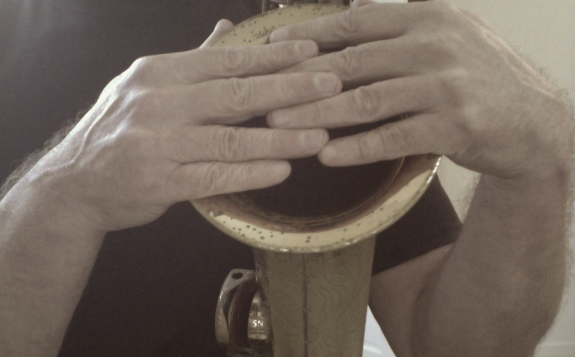One of the common traps that many musicians fall into is in thinking that one part of their body is almost entirely responsible for their sound: If it’s a flutist, it’s the lips. If it’s a violinist, its the hands. If it’s a singer, it’s the vocal mechanisms, and so forth. But in reality, this is never the case, and thinking about it as such can actually interfere with optimum performance.
True, if you’re a violinist, the music ultimately comes through your hands. If you aren’t using your hands well, you’re probably not going to have your best results.
But your hands are dependent upon your arms , which are dependent upon your back, which is conditioned by how you manage the relationship of your head and neck. And of course if you’re standing, your legs support your back, which supports your arms, which supports your hands.
This doesn’t even take into account how your eyes and ears influence all this.
When musicians come to me for Alexander Technique lessons, I typically see this over emphasis on one part of their body. Even before the first lesson, when we speak by phone, I often hear things like, “I’m having problems with the fingers of my right hand”, or, “I’m having jaw problems. My embouchure just seems stuck.”
And for sure, these musicians have identified the symptoms of a problem. But what they’ve really done is noticed the manifestation of a bigger problem: The coordination of their entire body is off kilter. They just haven’t realized that yet, and still think their problem is in this one, isolated part of their body.
Yet ironically, it’s this over emphasis and hyper awareness that is causing the problems. These musicians have effectively divided themselves into isolated, seemingly unrelated parts. All at the expense of excluding the whole of their bodies from the entire music making process.
In my own case it was the same thing. I took Alexander lessons because I had a serious problem with the functioning of my left hand, making playing the saxophone nearly impossible. When I came to my first lesson, my teacher listened very attentively and openly about my problem. She then begin to work with my head, neck and back.
Wait a minute! There’s nothing wrong with my head, neck and back (so I thought). The problem is with my left hand!
Well, fortunately for me, in that first lesson my teacher was able to show me (through the experience of movement) that my left hand problem was the end-result of the poorly coordinated use of my head, neck and back. As my head/neck/back relationship started to improve, the good functioning of my left hand began to return.
As the lessons continued, I grew to discover and understand how my legs, feet, eyes, hips…everything, was involved not only in how I used my left hand, but also, how I produced my sound, how I heard pitch, and even, how I imagined music and improvised.
Here’s a succinct and elegant description of this topic by Pedro de Alcantara, from his recently published book, Integrated Practice-Coordination, Rhythm and Sound:
” A violinist who plays a trill using two fingers of her left hand is, in fact, using both hands, both arms, both shoulders, and her head, neck, back and legs at the same time. If she doesn’t direct her back and legs to support her upper body, she’ll compensate unconsciously by stiffening her neck and shoulders, thereby affecting the fingers of her left hand. If she doesn’t command her right arm to bow smoothly and steadily, her left hand will lose some of its own stability. If she sways here pelvis forward and backward, she’ll hollow her lower back and shorten hers spine. Directly or indirectly, all these misuses will affect her trill.”
There’s just no getting around this truth.
So examine your own thinking about how you play your instrument (voice is an instrument, too!) Is there a connection in your thinking to all the parts, or does the “main” part live in isolation?
Whatever that “main” part is (hands, mouth, etc.) see if you can trace it back to its most immediate connection.Then trace that back to its connection, and so on. For example, if it’s your mouth, see how your lips work with respect to your jaw; then see how your jaw works with respect to your neck (and to how you balance your head on your spine); then notice how your head and neck work with respect to your back. All the way to your limbs, and even your eyes and ears.
You might find that there is some unnecessary tension in one or more of these connections. When you start letting go of these habitual tensions, you’ll indirectly improve the use of the main part, be it your lips, hands, feet…whatever.
So the aim here is to view your body as an integrated whole, not as a bunch of isolated parts. As you move toward integration of these parts into a unified whole, with a clear intention, you’ll make music in an easier, freer and more expressive way.
